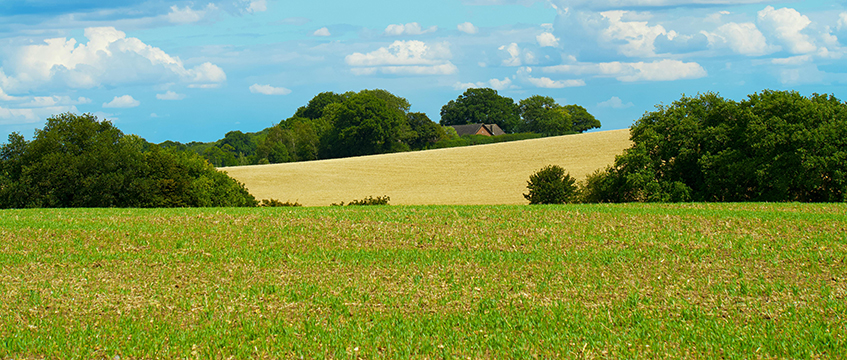Here’s a problem that arises frequently in practice, occurring in particular where a piece of land is to be developed intensively, imposing a strain on the means of access to it and the servicing of it.
Take the example of a developer who wishes to build a number of houses on a plot of agricultural land to which there is a single-track access, and a drain (which the developer in each case has a right to share). The farmers who own the access and share the drain object to the developer’s plans on the basis that they will no longer have room to manoeuvre their tractors up and down the track, and that there is insufficient drainage capacity to service both the farm and the houses.
Access
The access problem was explored, and resolved in favour of the developer, by an experienced circuit judge in April in Merlin Real Estate Ltd v Balaam and another [2024] PLSCS 88. There, the access track was several hundred metres long. When an express right of way over it (“in common with all other persons from time to time having the like right”) was granted in 1982, it served farmland and six dwellings. Through gradual development over the years, that number had increased to 27 dwellings by the time of the litigation, with a further 10 which the claimant intended to construct. The defendant farmers opposed the proceedings, which the claimant took in order to confirm its rights, on the footing that there had already been an interference with their own shared rights of access, and that the construction of further dwellings would worsen the problem.
The legal test as to whether there has been actionable excessive use of an easement is easy to state: is that use so intensive as to amount to an unreasonable interference with the servient owner’s own rights? But the answer in any given case will obviously depend on the actual evidence as to the extent of the use. In Merlin, although the defendants’ witness statements put up a formidable-looking case that there had been unreasonable interference already which would inevitably increase, the witnesses when cross-examined were unable to establish any sustained level of actual interference. Moreover, neither the photographic evidence nor the road use survey before the court established any serious interference.
The moral of this story is clear: excessive use of a right of way is a fact-dependent matter, needing comprehensive evidence of actual interference. Litigants preparing for such a case would be well-advised to devote their energies to compiling records of interference, rather than relying on generalised recollections.
Drainage
Dealing secondly with drainage, the right to drain water from land (and the right to a water supply) will often generate litigation involving similar issues where a development requires a greater use of the drainage or the supply, to the possible detriment of the owner of either. The decision of the Court of Appeal in McAdams Homes Ltd v Robinson [2004] 3 EGLR 93 best illustrates the point.
In that case, a cottage owner built a bakery on his adjoining land. Effluent from both buildings connected to the public sewer through a pipe serving the cottage. On a sale of the bakery, an implied right of drainage in its owner’s favour was created. A successor to the bakery demolished it and built two houses in its place. The owner of the cottage objected to the increased use of the pipe, and blocked it. The developer sued for the cost of constructing a new pipe, but the cottage owner established that the use of the easement following development of the bakery was indeed excessive.
After reviewing the authorities, Neuberger LJ summarised the principles applicable to developments of the dominant land in the context of implied (and prescriptive) easements. The issue is to be determined by answering two questions: (i) whether the development represented a “radical change in the character” or a “change in the identity” of the site as opposed to a mere change or intensification in the use of the site; and (ii) whether the use of the site as redeveloped would result in a substantial increase or alteration in the burden on the servient land. Only if both questions are answered in the affirmative would the right to enjoy the easement be suspended or lost.
The judge’s conclusions that both tests were satisfied were upheld. First, the mere fact that the bakery could have intensified its use of the pipe to a similar extent to use by two houses did not prevent a finding that there had been a substantial increase in burden. The proper comparison was the likely range of levels of flow in the pipe when used by a bakery and for two houses. Evidence of the intensity of realistic potential use was relevant to this, as was evidence of actual use. Neuberger LJ thought that, had there been evidence that the number of employees could have increased with the result that the consequent possible flow of water would exceed that from two houses, the judge could instead have found no substantial increase in burden.
However, the judge was entitled to conclude that there was a substantial increase on the evidence before him, which was limited to the likely extent of actual use by the bakery before development. The feasibility of the bakery employing more people who might use the facilities was not investigated.
We can conclude, in the light of these two quite different problems confronting developers, that any case based on an allegation of excessive use will require robust evidence of the actual or potential alleged increase in use.
Guy Fetherstonhaugh KC and Toby Boncey are barristers at Falcon Chambers









